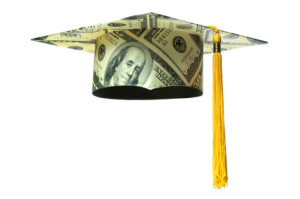 We know about how much outstanding student loan debt there is ($1.2 trillion, per the Consumer Financial Protection Bureau). We have numbers about how many borrowers default on their federal student loans (the two-year default rate is 10%, which means one out of 10 of borrowers who entered repayment in 2010-11 let 270 days pass without a payment, while the three-year default rate is 14.7%).
We know about how much outstanding student loan debt there is ($1.2 trillion, per the Consumer Financial Protection Bureau). We have numbers about how many borrowers default on their federal student loans (the two-year default rate is 10%, which means one out of 10 of borrowers who entered repayment in 2010-11 let 270 days pass without a payment, while the three-year default rate is 14.7%).
What we don’t know is how many borrowers struggle to repay their loans, falling behind and potentially trashing their credit, without actually defaulting. The U.S. Department of Education, which provides the default numbers, doesn’t provide statistics on delinquency. A recent study by the Federal Reserve Bank of New York used credit bureau records to put the “effective” delinquency rate at 31% at the end of 2012. The Fed researchers tried to figure out and subtract from the equation the loans that don’t have to be paid because the borrowers are in school, in grace periods or in approved suspension with forbearance or deferrals. They determined that of the rest–those borrowers who were supposed to be in repayment–nearly one in three was 90 days or more late with their payments.
Which is shocking, but it doesn’t quite match up with other studies and published statistics, student loan expert Mark Kantrowitz pointed out in my Reuters column, “Confusing data flummoxes fixing of student loan defaults.” A sampling of those other statistics:
- The Federal Reserve Bank of Kansas in 2013 determined that 9.7% of student loan accounts at the end of 2012 were past due, but the delinquency rate was 23% once loans that appeared to be in forbearance, deferment or for students still in school were eliminated. Notice that this study looked at accounts (individual loans), of which the typical borrower has more than one. If one out of four loans (roughly) were delinquent, the proportion of delinquent borrowers would be expected to be smaller (perhaps much smaller).
- Over a five-year period, the Institution for Education Policy (IHEP) concluded that 26% of borrowers were delinquent at some point and that another 15% had delinquencies that led to default. IHEP analyzed repayment data for nearly 1.8 million borrowers provided by five student loan guarantee agencies in 2011. Note, again, that what’s being measured is different from the New York Fed study. If one out of four borrowers had trouble paying their debt in a five year period, you’d expect the percentage in any single year to be substantially smaller.
- A previous report by the New York Fed researchers found the total volume of delinquent student loan debt in the third quarter of 2011 was 21%, yet figures published by the leading student loan company Sallie Mae suggest a much smaller pool of troubled loans. The company’s most recent quarterly filing with the Securities and Exchange Commission showed that 85.9% of its federal student loans in repayment were current, with just 7.5% 90 days or more late. The delinquency rate for the company’s traditional private loans was 2.9%. Private loans overall comprise about 15% of outstanding student loan volume.
So, the statistics so far measure different things–borrowers vs. accounts vs. volumes of student loan debt–using different sources (data from credit bureaus vs. data from lenders vs. data from one albeit very large lender) and coming to different conclusions.
Why does it matter? Well, if most borrowers are figuring out ways to pay their debt down over time, then the available solutions for dealing with student loan debt are probably adequate for most. If a huge proportion are struggling, on the other hand, then it may be time to roll out additional help.
Because student loan debt isn’t just a problem for those unwise enough to pile on too much of it. Struggling borrowers with lousy credit are hampered in every area of their economic life and could even have trouble getting the jobs that might help them pay their debt (because many employers check credit as a condition of employment). A big chunk of borrowers who can’t buy homes or cars or get decent jobs could be a real drag on the economy.